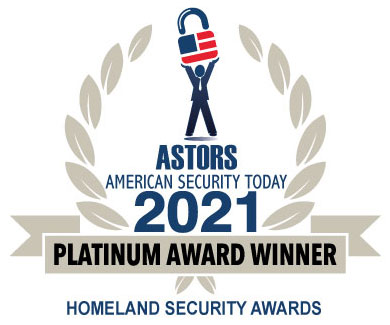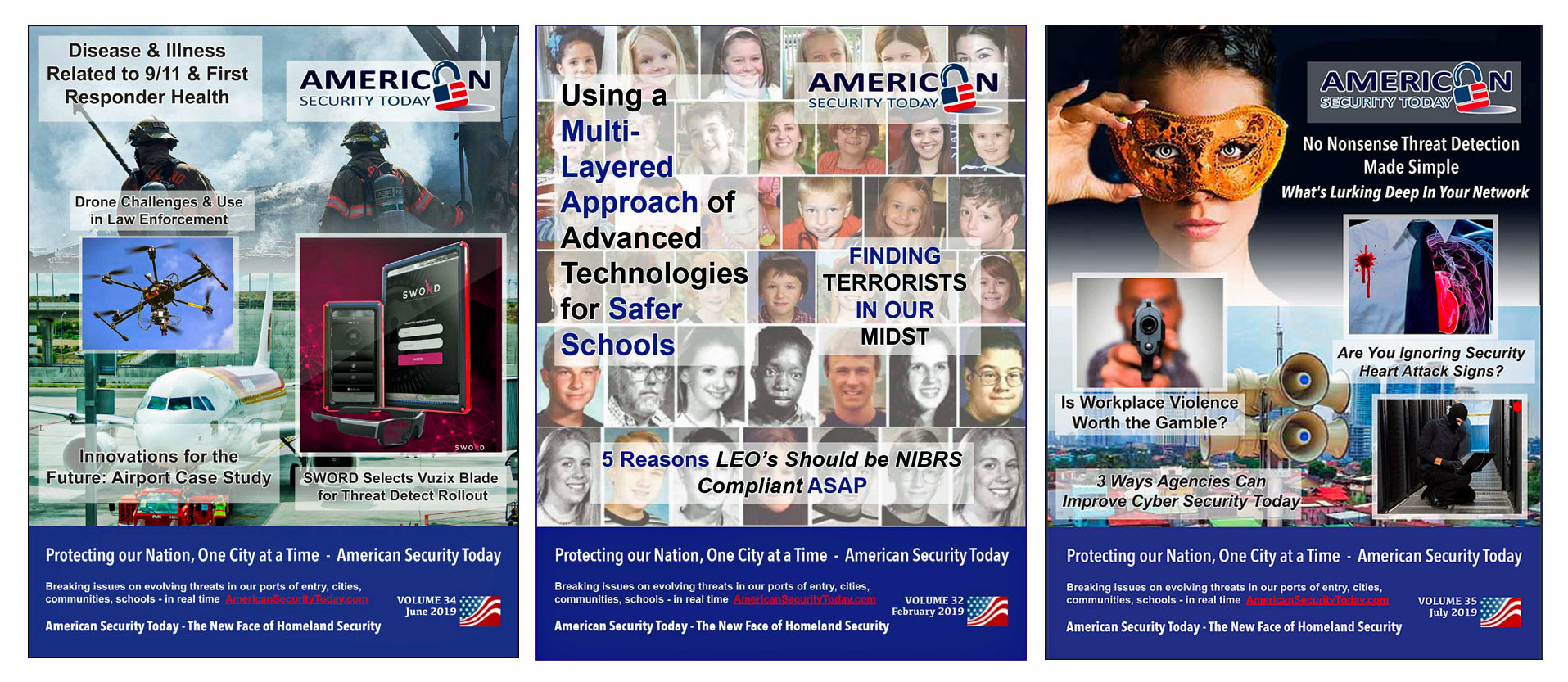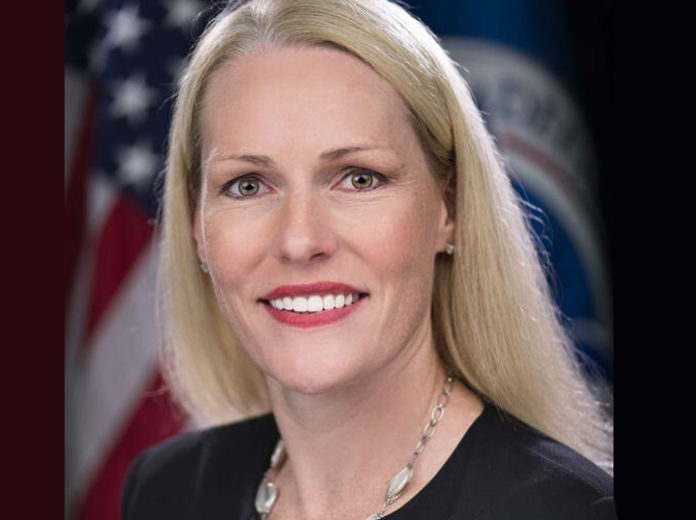
By Kathryn Coulter Mitchell, Senior Official Performing the Duties of the Under Secretary for the Science and Technology Directorate
The start of a new year is a perfect opportunity to reflect on the past and set new goals for the future.
2021 was a year of significant change and growth for the Science and Technology Directorate (S&T), evolving our organization to rapidly pivot to provide technical and scientific advice, assistance, and solutions to Department of Homeland Security (DHS) operations as an active response partner and advisor on the myriad of critical national-level challenges faced today.
We can all resolve to improve with each and every year, and S&T never misses an opportunity to evolve…that includes how we think about ourselves and our mission.
Science is all about asking questions, finding answers, and then asking even better questions. S&T fully embraces questions, as evidenced by our suite of Master Question Lists for COVID-19, African Swine Fever, and Synthetic Opioids.
We already reflected on the past year in our 2021 Year in Review, which focused on what we learned and accomplished (hint: it was A LOT).
As for the year ahead, leadership has set a clear foundational strategy to meet our mission. First, though, let’s get back to basics.
I’d like to start off 2022 by reintroducing S&T—who we are, what we stand for, and our strategy for continued transformational improvements in identified areas of opportunity.
The Basics
-
Who is S&T?
-
S&T is the science advisor to the Secretary, Deputy Secretary, and DHS operational components, and is the research and development arm of the homeland security enterprise.
-
We offer vast expertise; research, development, testing, and evaluation capabilities; and access to a well-established network of worldwide public and private partners for use in providing operational solutions to our DHS components and the Secretary.
(See how S&T is mobilizing innovation to secure our world. From sensors to cybersecurity to technology for first responders, S&T works with you to find tomorrow’s solutions, today. Courtesy of DHS Science and Technology Directorate and YouTube.)
-
What does S&T do?
-
S&T provides evidence-based scientific and technical perspectives to address a range of current and emerging threats—from aviation security to chemical and biological detection to resilience for our critical infrastructure related to climate and natural disasters, cybersecurity, and beyond.
-
We work hand-in-hand with fellow DHS component agencies, emergency management, and public safety personnel, and partners from across the public and private spectrums to develop timely and innovative solutions to meet today’s challenges and tomorrow’s opportunities.
-
We are in the business of identifying and delivering innovative solutions. Some of these, cultivated by our Technology Centers, may be commercially available or nearly market-ready. In other cases, we collaborate with partners from a broad network of federal, state, local, tribal, and territorial governments, our national laboratories, industry innovators, academia, and international agencies to pinpoint capability gaps and then build technologies and publish guidance to address them.
-
Throughout the entire research and development (R&D) lifecycle, we strive to connect partners with end-users across the nation to ensure our products can be transitioned to the commercial market for operational use.
-
How is S&T R&D organized?
-
S&T has three critical workstreams of investment that focus on our responsibilities to the homeland security enterprise:
-
a. The Customer Near-Term workstream includes projects/activities that focus on near-term (3-5 years) high-priority gaps or needs identified by DHS operational components and first responder communities. We employ customer-integrated product teams to collect, prioritize, and implement efforts throughout their R&D life cycle;
-
b. The Foundational Science workstream consists of enduring research that often results in data sets, knowledge products, and publications to support other scientific endeavors. This is where we use our core lab, university program, small business, and tech center research capabilities to support the homeland security enterprise; and
-
c. Our Future Needs and Emerging Threats workstream explores emerging science and technology areas and their potential threat and/or application to DHS missions.
-
-
Where does this work happen?
-
S&T prides itself on not just being an entity unto itself, but rather being the conduit to a well-established, worldwide network of public and private partners all working together to keep the nation safe through R&D.
-
Our work is supported by two Federally Funded Research and Development Centers, five National Laboratories, seven Technology Centers, and 12 Centers of Excellence (COE), interagency engagements, and a network of domestic and international partners in the private sector and academia.
(S&T Office of National Laboratories (ONL) offers a broad laboratory network including in-house laboratories with capabilities aligned strategically to enduring and strategic mission needs of DHS. Courtesy of DHS Science and Technology Directorate and YouTube.)
-
When was S&T started?
-
With the passage of the Homeland Security Act by Congress in November 2002, the Department of Homeland Security formally came into being as a stand-alone, cabinet-level department to further coordinate and unify national homeland security efforts.
-
DHS opened its doors on March 1, 2003, and S&T was established within the department at its inception.
-
How does S&T do what it does?
-
S&T works as an effective catalyst, leveraging relationships with our extensive network of domestic and international partners to bolster the strength and resilience of the homeland.
-
We do this by supporting critical near-term requirements of DHS components, serving the department and broader scientific community in the areas of foundational science, and advancing innovation ahead of emerging threats.
With that established, let’s explore what’s in store for 2022!
Public Health and Physical Safety
-
Is S&T still supporting COVID-19 response?
-
Yes. S&T is unrelenting in our COVID-19 response support. As long as our nation needs S&T expertise and capabilities to fight this disease, it’ll have it.
-
S&T just recently released two Supplemental References to the Master Question List (MQL) for COVID-19 which consolidates what we know so far about the Delta and Omicron variants.
-
S&T’s Probabilistic Analysis for National Threats Hazards and Risks (PANTHR) program will continue to refresh the COVID-19 MQL to include updates for emerging variants; coordinate response through established relationships with research partners; and when needed, will execute laboratory research to close key data gaps.
-
What is S&T doing about domestic violent extremism?
-
As the domestic violent extremism threat environment continues to evolve, we must continuously strive to understand the use of online platforms to spread narratives and the role academic institutions and the private sector can play in countering violent extremism.
-
The threat environment today is dynamic, complex, and rapidly evolving. How S&T approaches these threats must keep pace, as they morph and change.
-
S&T conducts evidence-based research to improve the effectiveness of public safety and violence prevention efforts, analyzing the threat environment and providing crucial data to determine how to build resilience.
-
This research, including the ongoing work at the National Counterterrorism, Innovation, Technology, and Education COE, will enable policymakers and operational end-users to make informed decisions to divert vulnerable individuals, prevent potential offenders, mitigate vulnerabilities, and enhance community resilience in the face of various social and behavioral threats, all while ensuring the privacy and civil rights and civil liberties of U.S. citizens.
(Learn about the S&T Master Question List (MQL) is intended to quickly present the current state of available information to government decision-makers in the operational response to COVID-19 and allow structured and scientifically guided discussions across the federal government without burdening them with the need to review scientific reports, and to prevent duplication of efforts by highlighting and coordinating research. Courtesy of DHS Science and Technology Directorate and YouTube.)
-
How else does S&T protect us from terrorism?
-
S&T supports the terrorism prevention mission by conducting applied research and evaluation, and by integrating scientifically derived knowledge to inform policy and programs throughout DHS.
-
With the Office for Targeted Violence and Terrorism Prevention, S&T develops resources for government and local partners to better understand the motives that drive engagement in violent extremism.
-
Additionally, we evaluate existing terrorism prevention activities and policies to improve their effectiveness.
(To protect our way of life and stay ahead of future threats, DHS operational components and the broader homeland security enterprise must enhance preparedness and better understand emerging threats, which could impact our safety and security. To reduce risks, S&T has built a world-class laboratory system of research partners and an extensive body of knowledge to keep frontline security operators informed, equipped, and ready to do their jobs. Featuring Julie Brewer, Executive Director of Innovation and Collaboration at DHS S&T. Courtesy of DHS Science and Technology Directorate and YouTube.)
-
What does the future of air travel look like?
-
S&T continues to work with DHS operational components to improve the air travel experience.
-
Results from our third annual Biometric Technology Rally revealed that advances in technology may mean organizations performing photo ID checks could allow individuals to keep their face masks on, thereby reducing the risk of COVID-19 transmission.
-
Facial recognition technology tests showed up to 96% accuracy.
-
In addition, two next-generation checkpoint screening technologies, the R&D 100 award-winning Shoe Scanner and the High Definition – Advanced Imaging Technology systems, were recently licensed for commercialization and could be coming soon to an airport near you.
(Have you thought about how the government can change your travel experience by reducing wait times and enhancing security? S&T has, and it is executing this vision. Advances in biometrics and digital identity provide fast-forward capabilities that will change the way you fly within the decade. S&T is building new capabilities to keep pace with the volume of the traveling public and the presence of complex threats. This discussion will give you an inside look at how S&T technology investments are improving the passenger experience and flow of commerce as well as getting the country moving again and protecting the frontline workforce. Featuring John Verrico, S&T Chief of Media and Community Relations. Courtesy of DHS Science and Technology Directorate and YouTube.)
-
How does S&T protect our borders?
-
Safeguarding the geographical landscape at and between ports of entry at our borders presents a number of challenges, such as human trafficking and smuggling of illicit drugs and other substances.
-
S&T and a coalition of federal partners assess technologies that inform our ability to monitor airspace and secure the border. Monitoring threats is essential to preventing illegal and dangerous entry into our country.
-
Air Domain Awareness (ADA) consists of the aerial surveillance technologies, sensors, and capabilities necessary to protect us from such activities.
-
S&T has held a series of demonstrations and test events in various geographic regions to increase our security and ensure our safety. ADA is one of many S&T border security initiatives.
(The Department of Homeland Security (DHS) Science and Technology Directorate (S&T) supports border and port of entry security with technology and knowledge products that improve the nation’s ability to detect, interdict, and prosecute illegal activity. These solutions assist DHS components and law enforcement agencies across the United States as they facilitate legitimate trade and travel across air, land, and sea. Courtesy of DHS Science and Technology Directorate and YouTube.)
-
How does S&T support first responders?
-
S&T addresses first responder mission challenges such as interoperability. For example, Computer-Aided-Dispatch (CAD) systems that support emergency response agencies are unable to electronically exchange information.
-
This prevents critical data from being shared by the various organizations responding to an incident. S&T is helping achieve a public safety CAD-to-CAD ecosystem that is resilient, efficient, and supports the multi-discipline response to regional, multi-state, and national events.
-
Are there any new first responder technologies transitioning soon?
-
It just so happens that a cutting-edge new capability will be available in 2022: the Precision Outdoor and Indoor Navigation and Tracking for Emergency Responders (POINTER), which provides a reliable, accurate locating capability in 3D-space.
-
This was the top mission priority requested by our First Responder Resource Group members.
-
POINTER can find a firefighter’s location inside a multi-story building within one centimeter and from 70 meters away.
(The Department of Homeland Security Science and Technology Directorate (S&T) teamed with @NASA Jet Propulsion Laboratory to develop POINTER, a groundbreaking first responder tracking technology that uses magnetoquasistatic fields to three-dimensionally locate responders during emergencies—especially when visibility is low due to heavy smoke or debris. With POINTER, incident command can pinpoint team members within one centimeter. Courtesy of DHS Science and Technology Directorate and YouTube.)
-
Is S&T doing anything to help fight wildfires?
-
Absolutely! Our wildfire sensors will provide early warning of smoke and other particulates in the air that could signal impending flames.
-
We’re also developing a new Wildland Firefighter Respirator, which has the potential to be a real game-changer.
-
The device is lightweight, runs on AA batteries, and uses inexpensive high-efficiency particulate absorbing filters to protect the lungs of frontline workers as they fight wildland fires.
(Wildland fires present a significant threat to the United States, and the Department of Homeland Security (DHS) Science and Technology Directorate (S&T) is fighting fire with technology. Wildland Fire Sensor Technology could provide the public with the advanced notice necessary to reduce the loss of life and property while giving communities the information and time necessary to make life-saving evacuations. Courtesy of DHS Science and Technology Directorate and YouTube.)
-
Is S&T helping combat climate change?
-
Climate change is a major threat to the security of our nation and indeed our entire planet. S&T has prioritized addressing the climate crisis with a strategy of building resilience that aligns with administration priorities to address climate change challenges.
-
The Cooling Solutions Challenge, a joint effort with the Federal Emergency Management Agency and White House, is just one instance of S&T efforts aimed at climate change.
-
The prize competition seeks out innovative solutions to mitigate the effects of extreme heat—a significant health risk in the wake of many natural disasters.
(Climate change is changing the way we think about and plan for securing the homeland – protecting our economy, health, infrastructure, and overall well-being of our citizens. Amidst a global pandemic in 2020, 22 climate disasters occurred, marking the sixth consecutive year that 10 or more billion-dollar weather and climate disasters have impacted our regional and national security. Threats to our housing, energy, agriculture, commerce, and emergency support functions make climate a top priority. S&T understands there is no one-size-fits-all approach to combating the climate crisis and is making real impacts to protect our communities and their frontline workers. Courtesy of DHS Science and Technology Directorate and YouTube.)
Other Top Priorities and Focus Areas
-
What is S&T doing to strengthen infrastructure?
-
Infrastructure is a broad term encompassing numerous sectors that enable the functioning of our modern society and critical infrastructure resilience is a primary focus of S&T R&D efforts.
-
At S&T, we are engaged in world-class research projects through an interconnected network of partners across government, academia, research institutes, industry, businesses, and other stakeholders to ensure all 16 critical infrastructure sectors, including energy, communications, and transportation systems, are secure and resilient.
-
Critical infrastructure is typically owned and operated by the private sector, though some is owned by federal, state, or local governments.
-
This explains why S&T is so broadly engaged with diverse partners to develop solutions to help secure these sectors and protect them from natural and human-caused threats.
-
As one example, the Resilient Electric Grid (REG) system installed in Chicago in the fall of 2021 will ensure reliable power by suppressing power surges, while also connecting substations without the risk of a cascading fault current.
(Communities vulnerable to disasters and disruptions brought by the COVID-19 pandemic and the climate crisis are prompting governments to enhance infrastructure resilience across power, transportation, water, supply chain, food, and financial systems. To seize the moment and close inequality gaps, S&T is building cross-disciplinary research teams to holistically assess our critical infrastructure and lifeline services. This panel discussion will dive into how science and technology advances in autonomy, predictive analytics, modeling and simulation, and mobility offer new solutions to tackle immediate challenges, ensuring no community is left behind. Featuring Richard Seline, Co-Founder at Resilience Innovation Hub, and Courtesy of DHS Science and Technology Directorate and YouTube.)
-
What about strengthening cybersecurity?
-
S&T improves cybersecurity capabilities through strategic R&D in the areas of mitigation, solution development, and resilience.
-
In line with DHS’s cybersecurity strategy, S&T brings together leading innovators in academia, industry, and government to identify new tools and tactics that can help network owners and operators overcome emerging cyber threats.
-
S&T often teams up with the Cybersecurity and Infrastructure Security Agency (CISA) to mitigate these threats.
-
Just one instance of this partnership is the Secure and Resilient Mobile Network Infrastructure (SRMNI) project, which addresses top CISA priorities of securing critical mobile supply chains and networks.
(The Department of Homeland Security (DHS) Science and Technology Directorate (S&T) helps improve cybersecurity capabilities through strategic research and development (R&D) in the areas of mitigation, solution development, and resilience. In line with the DHS Cybersecurity Strategy, S&T brings together leading innovators in academia, industry, and government to identify new tools and tactics that can help network owners and operators overcome emerging cyber threats. Courtesy of DHS Science and Technology Directorate and YouTube.)
-
How does S&T protect us from chemical, biological, and explosive threats?
-
S&T’s investments support prevention and protective strategies, as well as the coordinated surveillance and detection of chemical, biological, and explosive (CBE) threats.
-
R&D includes prevention of terrorism, reduction of vulnerability of critical infrastructure from terrorist attacks and other hazards, and the prevention of illicit movement and illegal passage of unauthorized persons and contraband by providing technology capable of detecting CBE threats.
-
S&T’s efforts in the Project Jack Rabbit chemical release trials and computer modeling studies, identifying critical data gaps for toxic inhalation hazard emergency response procedures, are a prime example of this work.
-
Jack Rabbit I in 2010 and Jack Rabbit II in 2015-2016 laid the groundwork for Jack Rabbit III, which is currently underway and set to continue through 2024.
-
What R&D will S&T be prioritizing in 2022?
-
S&T will be pursuing its strategic goals of leadership, partnership, capability delivery, and developing tomorrow’s workforce in 2022.
-
This means becoming the driving force of innovation for DHS and engaging in deliberate relationships with science, engineering, and technology communities to equip DHS for success.
-
It also means reaffirming the authority and trusted provider of science and technology expertise and solutions while advancing the S&T team to lead, develop partnerships, and deliver solutions to the Department.
Collaboration and Partnership
-
Who will S&T partner with in the coming year?
-
Like always, we will partner with everyone from other DHS components and federal agencies to state, local, and tribal governments to academic institutions and private industry.
-
We will certainly also continue our trusted relationships with international allies, such as our 5RD counterparts, the United Kingdom, Canada, Australia, and New Zealand, as well as our national labs, the interagency, universities, the private sector, and ALL of our worldwide network of partners.
-
How can I partner with S&T?
-
There are a number of ways to team up with our innovation experts and work with S&T. The Small Business Innovation Research Program and the Silicon Valley Innovation Program reach out to entrepreneurs across the nation to find new solutions to mission challenges.
-
We have new prize competitions on the horizon, which help S&T crowdsource unique perspectives, and a standing, open Long Range Broad Agency Announcement.
(Learn More by hearing directly from Kathryn Coulter Mitchell, the Senior Official Performing the Duties of the Undersecretary for Science and Technology, as she delivered opening remarks on Day 1 of the inaugural Silicon Valley Innovation Program (SVIP) Demo Week. Courtesy of DHS Science and Technology Directorate and YouTube.)
-
How can I learn more about S&T?
-
Follow us on social media @dhsscitech and continue to visit our website for the latest news and updates!
-
Looking ahead to 2022, S&T will be focusing on emerging technologies like artificial intelligence and machine learning to address our most pressing current challenges and mitigate future threats.
-
We’re prioritizing climate change solutions and critical infrastructure resiliency.
-
We’re partnering with colleagues across federal, state, and local governments and around the world.
-
We’re doing the science and were advancing technology. And we can’t wait to share it all with you.
About the Author
Kathryn Coulter Mitchell was appointed the Senior Official Performing the Duties of the Under Secretary for Science and Technology (S&T) on May 5, 2021.
As the science advisor to the Homeland Security Secretary, Ms. Coulter Mitchell heads the research, development, innovation and testing, and evaluation activities in support of the Department of Homeland Security’s (DHS) operational Components and first responders across the nation.
DHS S&T Recognized with Multiple 2021 ‘ASTORS’ Homeland Security Awards
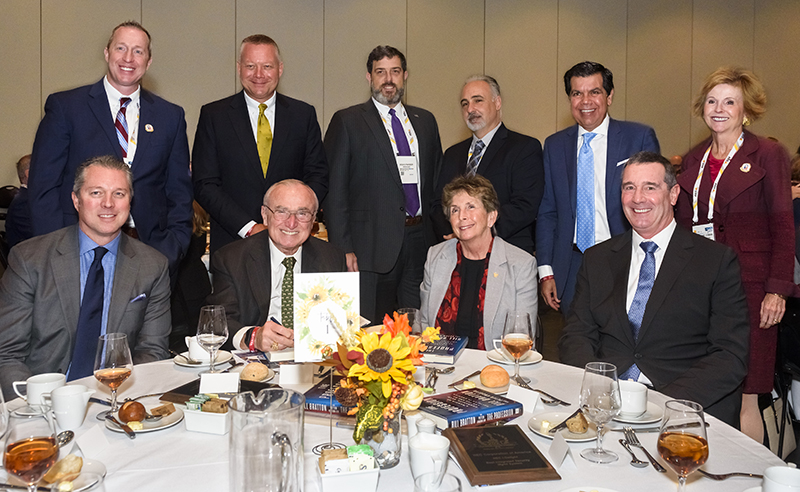
American Security Today’s Annual ‘ASTORS’ Awards is the preeminent U.S. Homeland Security Awards Program, and now entering it’s Seventh Year, continues to recognize industry leaders of Physical and Border Security, Cybersecurity, Emergency Preparedness – Management and Response, Law Enforcement, First Responders, as well as federal, state and municipal government agencies in the acknowledgment of their outstanding efforts to Keep our Nation Secure.
DHS Science & Technology (First of Four)
-
Excellence in Public Safety
-
The DHS Science and Technology Directorate (S&T) awarded a grant to the National Center for Disaster Medicine and Public Health (NCDMPH) to develop the school-age trauma training that became First Aid for Severe Trauma (FAST).
-
FAST is the first national STOP THE BLEED® course designed specifically for high school students and made available through the American Red Cross, thanks to the S&T grant.
-
While FAST is available for anyone, the course and digital materials are offered at no charge to high school students under the age of 19.
(The FAST education program is based on funding provided by the Department of Homeland Security (DHS) Science and Technology Directorate (S&T) to the National Center for Disaster Medicine and Public Health (NCDMPH). The FAST course and digital materials, developed by the American Red Cross in collaboration with NCDMPH, will be offered at no charge to high school students under the age of 19, thanks to the S&T grant. Courtesy of the DHS Science and Technology Directorate and YouTube.)
DHS Science & Technology (Second of Four)
-
Excellence in Public Safety
-
-
Wildland Fire Sensor Technology
-
The Wildland fires present a significant threat to the United States, and the DHS Science and Technology Directorate (S&T) is fighting fire with technology.
-
Wildland Fire Sensor Technology could provide the public with the advanced notice necessary to reduce the loss of life and property while giving communities the information and time necessary to make life-saving evacuations.
-
-
(Learn More, courtesy of the DHS Science and Technology Directorate and YouTube.)
DHS Science & Technology (Third of Four)
- Excellence in Homeland Security
-
In the event of a radiological or nuclear incident, emergency response agencies and HAZMAT teams could utilize this new technology to set up community reception centers to screen members of the public for potential exposure to radioactive contaminants.

-
Two inventors from the DHS National Urban Security Technology Laboratory (NUSTL) have developed a personal radiation detector (PRD) that could be placed beneath an entry ramp to detect radioactivity on the shoes of people being pre-screened before entering main screening areas.
-
This innovative and unique new device emits an alarm sound that is both louder than, and distinctive from other alarms, to ensure it can be easily heard and distinguished from other devices.
-
Additionally, the remote alarm box does not require any batteries nor external power and can be stored indefinitely without maintenance so that it is immediately ready for use in an emergency.
DHS Science & Technology (Fourth of Four)
-
Excellence in Homeland Security
-
DHS S&T identifies research the agency will conduct to understand the opportunities, as well as the risks, that accompany the rapidly changing AI/ML technology landscape and its impacts to DHS missions, and incorporate the technological advancements in AI/ML to enhance the efficiency and effectiveness of the DHS operational components and the broader Homeland Security enterprise.

-
S&T’s three strategic goals are to 1) drive next-generation AI/ML technologies for cross-cutting homeland security capabilities; 2) facilitate the use of proven AI/ML capabilities in homeland security missions; and 3) build an interdisciplinary AI/ML-trained workforce.
-
The Strategic Plan aligns with the DHS Artificial Intelligence Strategy, which lays out goals to govern the Department’s approach to integrating AI into the DHS mission.
Also recognized…
Mr. John Merrill
-
Excellence in Homeland Security
-
-
Deputy Director, Technology Centers Division (Acting) at U.S. Department of Homeland Security
-
-
(Learn More about how the DHS Science and Technology Directorate (S&)T is mobilizing innovation to secure our world. From sensors to cybersecurity to technology for first responders, we work with you to find tomorrow’s solutions, today. Courtesy of DHS Science and Technology Directorate.)
The Annual ‘ASTORS’ Awards highlights the most cutting-edge and forward-thinking security solutions coming onto the market today, to ensure our readers have the information they need to stay ahead of the competition and keep our Nation safe – one facility, street, and city at a time.

AST Honors Thomas Richardson, FDNY Chief of Department; Dr. Kathleen Kiernan, President of NEC National Security Systems; and Richard Blatus, FDNY Assistant Chief of Operations, at the 2021 ‘ASTORS’ Awards Luncheon at ISC East.
The United States was forever changed 20 years ago on September 11th, and we were fortunate to have many of those who responded to those horrific tragedies join us at the 2021 ‘ASTORS’ Awards Luncheon.
In the days that followed 9/11, the critical needs of protecting our country catapulted us into new and innovative ways to secure our homeland – which is how many of the agencies and enterprise organizations that are today ‘ASTORS’ Awards Champions, came into being.

Our keynote speaker featured a moving and informative address from TSA Administrator and Vice-Admiral of the United States Coast Guard (Ret), David Pekoske; to our attendees who traveled from across the United States and abroad, on the strategic priorities of the 64,000 member TSA workforce in securing the transportation system, enabling safe, and in many cases, contactless travel.

Legendary Police Commissioner William Bratton of the New York Police Department, the Boston Police Department, and former Chief of the Los Angeles Police Department was also live at the event, meeting with attendees and signing copies of his latest work ‘The Profession: A Memoir of Community, Race, and the Arc of Policing in America,’ courtesy of the generosity of our 2021 ‘ASTORS’ Awards Premier Sponsors.
The 2021 ‘ASTORS’ Awards Program was Proudly Sponsored by AMAROK, Fortior Solutions and SIMS Software, along with Returning Premier Sponsors ATI Systems, Attivo Networks, Automatic Systems, and Reed Exhibitions.
Why American Security Today?
The traditional security marketplace has long been covered by a host of publications putting forward the old school basics to what is Today – a fast-changing security landscape.
American Security Today is uniquely focused on the broader Homeland Security & Public Safety marketplace with over 75,000 readers at the Federal, State, and local levels of government as well as firms allied to the government.
American Security Today brings forward a fresh compelling look and read with our customized digital publications that hold readers’ eyes throughout the story with cutting-edge editorial that provides solutions to their challenges.
Harness the Power of the Web – with our 100% Mobile Friendly Publications

AST Digital Publications are distributed to over 75,000 qualified government and homeland security professionals, in federal, state, local, and private security sectors.
‘PROTECTING OUR NATION, ONE CITY AT A TIME’
AST Reaches both Private & Public Experts, essential to meeting these new challenges.
Today’s new generation of public safety and security experts need real-time knowledge to deal with domestic and international terrorism, lone wolf attacks, unprecedented urban violence, shifts in society, culture, and media bias – making it increasingly difficult for Homeland Security, Law Enforcement, First Responders, Military and Private Security Professionals to implement coordinated security measures to ensure national security and improve public safety.
These experts are from Government at the federal, state, and local level as well as from private firms allied to the government.
AST provides a full plate of topics in our AST Monthly Magazine Editions, AST Website, and AST Daily News Alerts, covering 23 Vital Sectors such as Access Control, Perimeter Protection, Video Surveillance/Analytics, Airport Security, Border Security, CBRNE Detection, Border Security, Ports, Cybersecurity, Networking Security, Encryption, Law Enforcement, First Responders, Campus Security, Security Services, Corporate Facilities, and Emergency Response among others.
AST has Expanded readership into integral Critical Infrastructure audiences such as Protection of Nuclear Facilities, Water Plants & Dams, Bridges & Tunnels, and other potential targets of terrorism.
Other areas of concern include Transportation Hubs, Public Assemblies, Government Facilities, Sporting & Concert Stadiums, our Nation’s Schools & Universities, and Commercial Business Destinations – all enticing targets due to the large number of persons and resources clustered together.
(See just a few highlights of American Security Today’s 2021 ‘ASTORS’ Awards Presentation Luncheon at ISC East. Courtesy of My Pristine Images and Vimeo.)
To learn more about ‘ASTORS’ Homeland Security Award Winners solutions, be on the lookout for the 2021 ‘ASTORS’ CHAMPIONS Edition Fully Interactive Magazine – the Best Products of 2021 ‘A Year in Review’.
The Annual CHAMPIONS edition includes a review of Annual ‘ASTORS’ Award Winning products and programs, highlighting key details on many of the winning firm’s products and services, including video interviews and more.
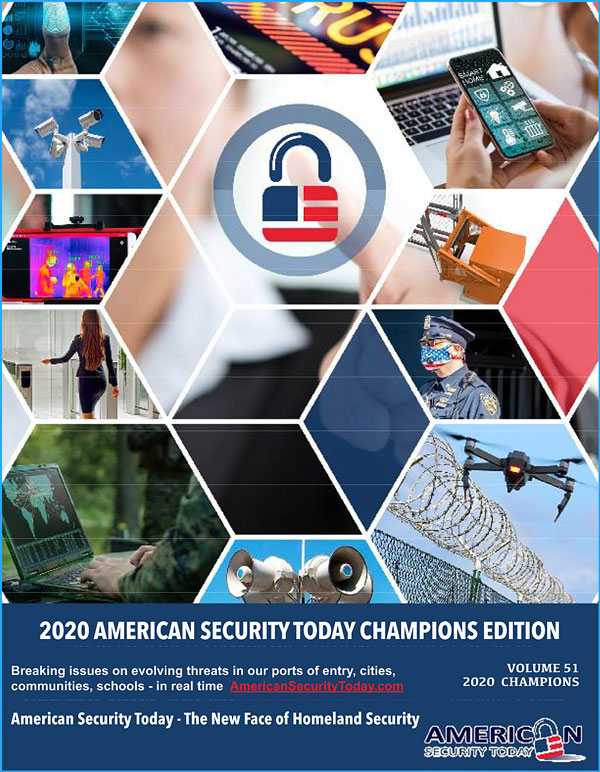
It will serve as your Go-To Source throughout the year for ‘The Best of 2021 Products and Services‘ endorsed by American Security Today, and can satisfy your agency’s and/or organization’s most pressing Homeland Security and Public Safety needs.
From Physical Security (Access Control, Critical Infrastructure, Perimeter Protection, and Video Surveillance Cameras and Video Management Systems), to IT Security (Cybersecurity, Encryption, Data Storage, Anti-Malware and Networking Security – Just to name a few), the 2021 ‘ASTORS’ CHAMPIONS EDITION will have what you need to Detect, Delay, Respond to, and Mitigate today’s real-time threats in our constantly evolving security landscape.
It will also include featured guest editorial pieces from some of the security industry’s most respected leaders, and recognized firms in the 2021 ‘ASTORS’ Awards Program.
-
For a complete list of 2021 ‘ASTORS’ Award Winners, begin HERE.
For more information on All Things American Security Today, as well as the 2021 ‘ASTORS’ Awards Program, please contact Michael Madsen, AST Publisher at mmadsen@americansecuritytoday.com.
AST strives to meet a 3 STAR trustworthiness rating, based on the following criteria:
- Provides named sources
- Reported by more than one notable outlet
- Includes supporting video, direct statements, or photos













